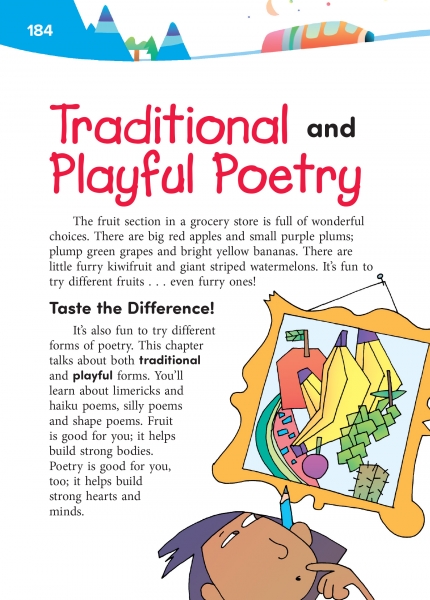Page 184 from

Start-Up Activity
Ask students what their favorite fruit is. Write answers on the board. Ask apple fans if they have ever had a pear. What is the difference between them? What are some similarities? Ask grape people if they also like raisins. Point out to students that "an apple a day keeps the doctor away," but also can get pretty boring. On the other hand, "variety is the spice of life."
Tell them that they will be experimenting with different poetic forms in this chapter. By trying different types of poetry, they will expand what they like and add some spice to their lives.
Think About It
“Don't be afraid to go out on a limb. It's where all the fruit is.”
—Shirley MacLaine

Start-Up Activity
Ask students what their favorite fruit is. Write answers on the board. Ask apple fans if they have ever had a pear. What is the difference between them? What are some similarities? Ask grape people if they also like raisins. Point out to students that "an apple a day keeps the doctor away," but also can get pretty boring. On the other hand, "variety is the spice of life."
Tell them that they will be experimenting with different poetic forms in this chapter. By trying different types of poetry, they will expand what they like and add some spice to their lives.
Think About It
“Don't be afraid to go out on a limb. It's where all the fruit is.”
—Shirley MacLaine
